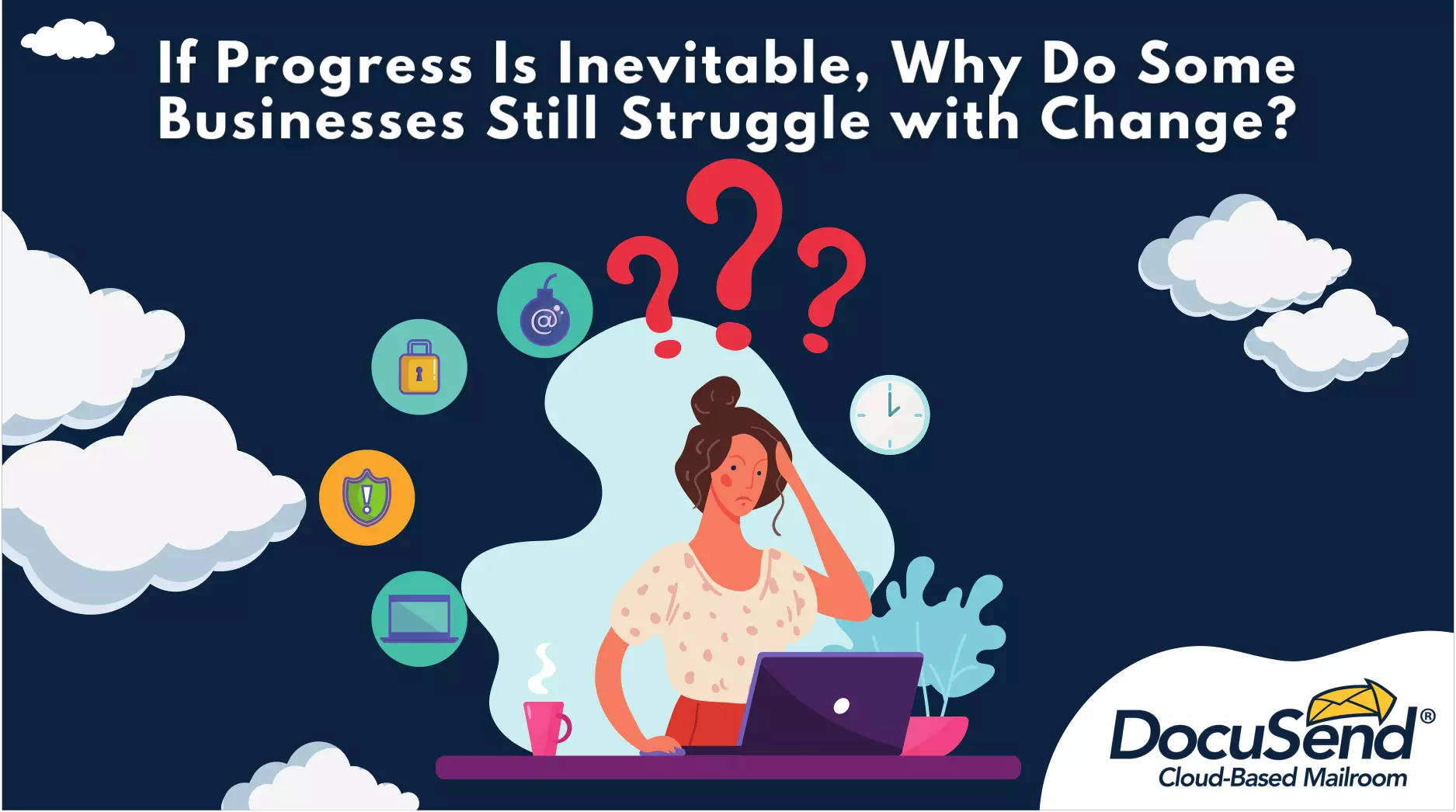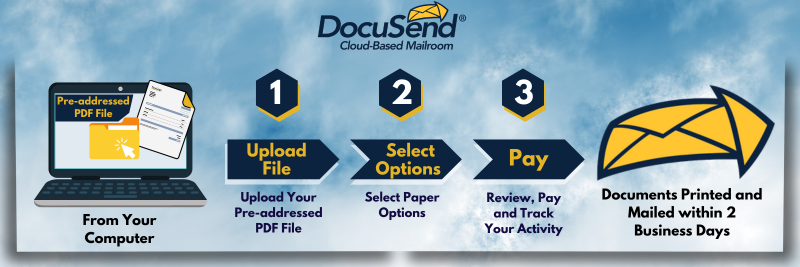If Progress Is Inevitable, Why Do Some Businesses Still Struggle with Change?

All small business owners struggle with change to some degree. It’s just too easy to slip into one of those all-too-familiar “comfort zones,” and before you know it, you find yourself stuck there.
And the worst part is, it’s not the safest place to be for any length of time!
As small business owners and operators, we know that even though we may be on the right track, we still might get run over by a train if we don’t keep moving. Yet have you ever noticed how some businesses have a much harder time coping with change than others? Even the most dedicated advocates of progress sometimes find themselves overwhelmed by rapid changes in technology. But ignoring change can cripple the growth of any business.
So, let’s take a closer look. Why do some businesses struggle more than others?
Let’s start by going back to that all-important comfort zone. When you’re comfortable, you may not even be aware that a problem exists. You become content with the way things are. Complacency is not a good place for any SMB to be in. If we stay there, our competitors will creep up on us. Here’s a story for those of us who occasionally lose sight of why things are done the way they are. It was related to me years ago by a very smart instructor who taught a course in productivity, and I never forgot it.
“A Ham Recipe in Need of an Update”

A friend of mine (Pete) had been married a few weeks when one night his wife surprised him with a delicious ham for dinner. “This is the best ham I’ve ever had!” he exclaimed to his new bride, making her beam with pride. “Where did you learn to make this?” “Well, the recipe has been in my family for generations, and my mother recently passed it on to me because we’re married now” she replied. “So, how do you make it?” Pete asked. She said, “You just buy a good 8-pound shank ham, cut one third off the end of it, baste the remaining two thirds with a special marinade, and cook it at low temperature for 6 hours.”
Pete was impressed, but a little perplexed.
“That’s great, but why do you cut a third of it off before you cook it?” he asked. His wife thought for a bit. “I don’t really know…my mother taught me how to make this ham, my grandmother taught her, and my great-grandmother taught her before that. But the only thing you need to know is it’s the best ham you ever had.” Seeing she was a little protective of her family recipe, he decided to drop it.
Curiosity caught up with Pete a few days later. He decided to call his mother-in-law and ask why she cut off a third of the ham before she put it in the oven. To his surprise, she gave him a similar reply, using an irritated tone. “I taught my daughter the same as my mother taught me and her mother taught her before that. You men are all the same! All you need to know is it’s the best ham you ever had.”
Obsession began to overtake curiosity, and Pete was now on a mission. He had to know the reason behind this strange recipe, even at the risk of annoying his wife’s family. He called the grandmother and was not surprised to get the same answer. Knowing it was his last chance, he paid a visit to the great-grandmother, who still had a very keen mind despite her advanced age.
“You’re my last hope!” Pete cried. Why in heaven’s name does your recipe call for one third of the ham to be cut off before you cook it?”
She looked him square in the eye, the beginning of a smile curling her lips as she whispered, “I don’t know why they do it, but I didn’t have a big enough pan to put it in.”
So, Did the Recipe Ever Actually Change?
That was the end of the story as it was told to me, but I like to think that Pete's wife went out and bought a bigger pan or a smaller ham when she heard what her great-grandmother had said.
Here’s the kicker:
If Pete's wife or any of the other cooks in the family ended up sticking to the original recipe, which isn’t entirely out of the question, what possible reasons could they have come up with? I thought of a few that can generally be applied to businesses and other organizations:
- Fear of the unknown
- Not understanding the need for change
- Emotional connection to the traditional way
- Lack of competence
- Lack of confidence in being able to manage the change
- Poor communication
- Benefits of the change are not clear
If you care to comment or add any more reasons you can think of, you can do so at the end of this article. You never know what small businesses you might help out.
Let's dig even deeper.
What do ham recipes have to do with DocuSend and small-to-medium-size businesses?
It only takes a few minutes for any SMB to upload a single invoice, or thousands of them, to our cloud-based print-to-mail service, and all documents are mailed within 2 business days. Not using it is the equivalent of wasting good ham. There’s no registration, no commitment, no minimum charge, no obligation, no contract, and no risk. What’s more, you will save at least 50% by not printing documents and stuffing envelopes manually.
So, what possible reasons could businesses that mail invoices or other documents have for choosing NOT to use DocuSend as their cloud-based mailroom?
- They don’t know the service exists.
- They don’t realize how simple and effective it is.
- The one that really gets me, the one reflected in the ham story above: resistance to change.
I see it every day, in every type and size of business: people caught up in that comfort zone, just waiting for the train to come along and run them down. Over the years, I’ve heard the same old explanations, marinated in resistance to change:
- “Oh, I only mail 40 invoices per week, so it doesn’t take me much time.”
- “I pay my mother-in-law to mail bills at the end of the month, and my wife would kill me if I stopped.”
- “I only stuff envelopes in my spare time!” (I love that one.)
- “We’ve always done it that way.”
- “What would we do with all our stationery and envelopes?”
- “I'm just sitting here at the reception desk not doing anything anyway.”
Don't get me wrong—my intention is not to question the way anyone operates their business. My intention is to raise questions that may not have occurred to some SMB owners.
It might sound crazy, but I’d like to know if there are any high-level small-to-medium business operators or owners out there who still think paying employees to print and stuff envelopes is an efficient way to have them spend their time. Especially in a world where DocuSend exists. By all means, please enter your comments.
I am greatly encouraged by the resilience and perseverance of the thousands of SMB owners who have not fallen into the trap of doing things the same old way. I’m talking about the people who take a leadership role in replacing the time employees spend stuffing envelopes with assignments like:
- Researching competitors’ websites for comparable services
- Conducting customer surveys
- Managing retention campaigns
- Increasing customer touchpoints to improve client satisfaction

As an example of the last item on that list, I once got a call from a landscaping company just to ask if some minor work they did in our yard was OK. How can you beat that? As long as they continue to provide good service and a follow-up protocol like that, I will be their loyal customer for life.
We would love to hear how you would use the time your business saves by not stuffing envelopes. Your suggestions can benefit SMBs everywhere.

